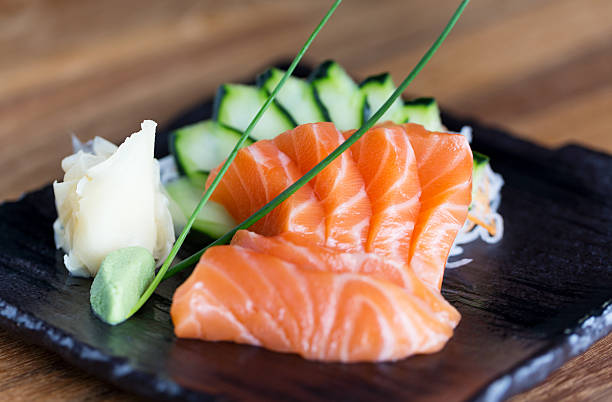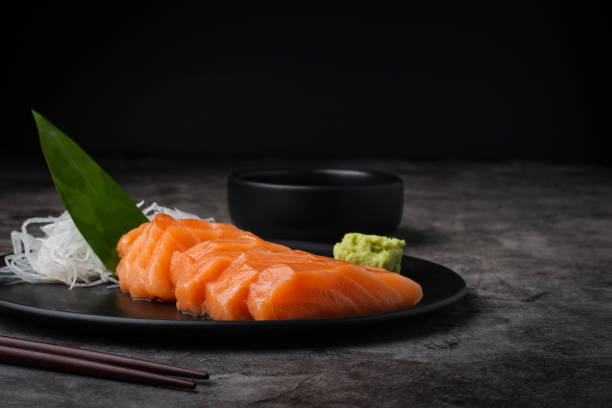Sashimi is a popular dish in Japanese cuisine, consisting of thinly sliced raw fish or meat. It is a healthy and delicious option for those looking to add more seafood to their diet, but it is important to know the calorie content of sashimi in order to make informed decisions about what to eat.
First, it is important to understand that the calorie content of sashimi will vary depending on the type of fish or meat used. For example, tuna sashimi has a higher calorie content than salmon sashimi. This is because tuna has a higher fat content than salmon. Additionally, the preparation method can also affect the calorie content of sashimi. For instance, sashimi that is served with a sauce or garnish may have more calories than plain sashimi.
One serving of tuna sashimi, which is about 3 ounces, contains approximately 110 calories. This serving size also contains about 2 grams of fat, 22 grams of protein, and 1 gram of carbohydrates. On the other hand, a 3-ounce serving of salmon sashimi contains about 70 calories, 1 gram of fat, 15 grams of protein, and 1 gram of carbohydrates.
Sashimi is a traditional Japanese dish that is made up of thinly sliced raw fish or seafood. It is a popular dish in Japan and is considered a delicacy in many parts of the world. Sashimi is often served as an appetizer or as part of a larger meal. It is typically accompanied by soy sauce, wasabi, and ginger.
When it comes to the nutritional value of sashimi, it is important to note that the calorie count can vary depending on the type of fish or seafood used. Generally speaking, sashimi is a low-calorie food that is high in protein and healthy fats.
For example, a 3.5-ounce serving of raw tuna sashimi contains around 100 calories. This serving also provides about 20 grams of protein and 2 grams of fat. Similarly, a 3.5-ounce serving of raw salmon sashimi contains around 130 calories, with 20 grams of protein and 4 grams of fat.
Other types of sashimi, such as octopus, squid, and eel, also have low calorie counts. A 3.5-ounce serving of raw octopus sashimi contains around 70 calories, with 12 grams of protein and 1 gram of fat. A 3.5-ounce serving of raw squid sashimi contains around 50 calories, with 10 grams of protein and 1 gram of fat. A 3.5-ounce serving of raw eel sashimi contains around 120 calories, with 23 grams of protein and 4 grams of fat.
It is also important to note that many restaurants serve larger portions of sashimi than what is considered a standard serving size. When dining out, it is important to be mindful of portion sizes and to ask the server about the calorie content of the dishes you are ordering.
In addition to the calorie content, it is also important to consider the nutritional value of sashimi. Fish and seafood are generally considered to be good sources of protein, omega-3 fatty acids, and other nutrients. These nutrients are essential for maintaining a healthy diet and can help to reduce the risk of chronic diseases such as heart disease and stroke.
However, it is also important to be aware that some types of fish used in sashimi may contain high levels of mercury, which can be harmful to human health in high concentrations. To minimize the risk of consuming too much mercury, it is recommended to consume a variety of different types of fish and to avoid eating certain types of fish, such as swordfish and shark, which have been found to contain high levels of mercury.
In conclusion, sashimi is a healthy and delicious option for those looking to add more seafood to their diet. However, it is important to be aware of the calorie content of sashimi, as well as the type of fish or meat used and the preparation method. By being mindful of portion sizes and the nutritional value of sashimi, you can make informed decisions about what to eat and enjoy the many health benefits of consuming fish and seafood.

 Home
Home Health
Health Diet & Nutrition
Diet & Nutrition Living Well
Living Well More
More












